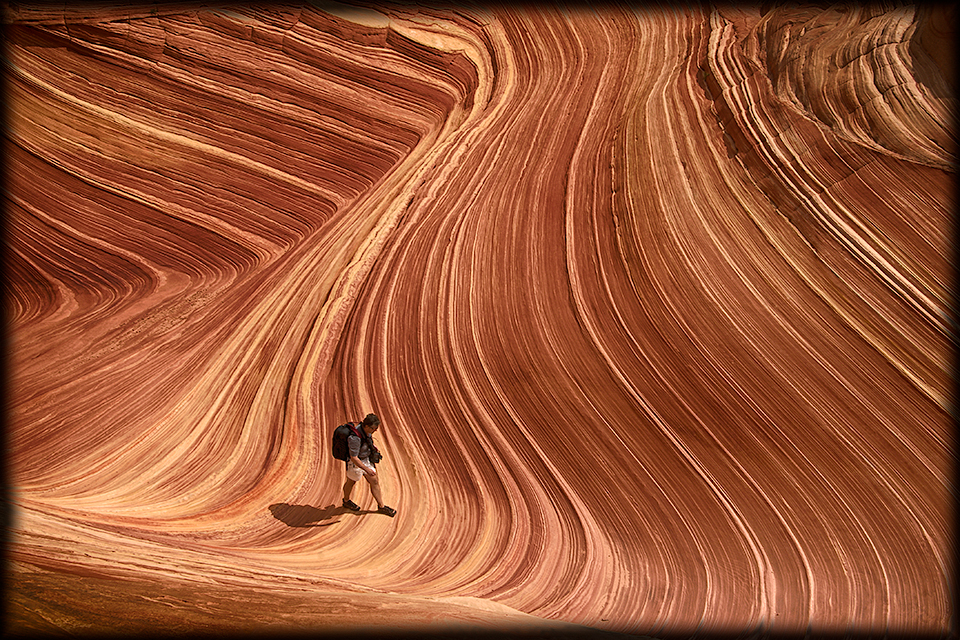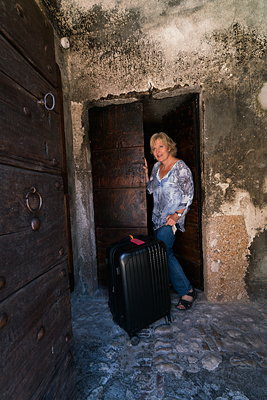
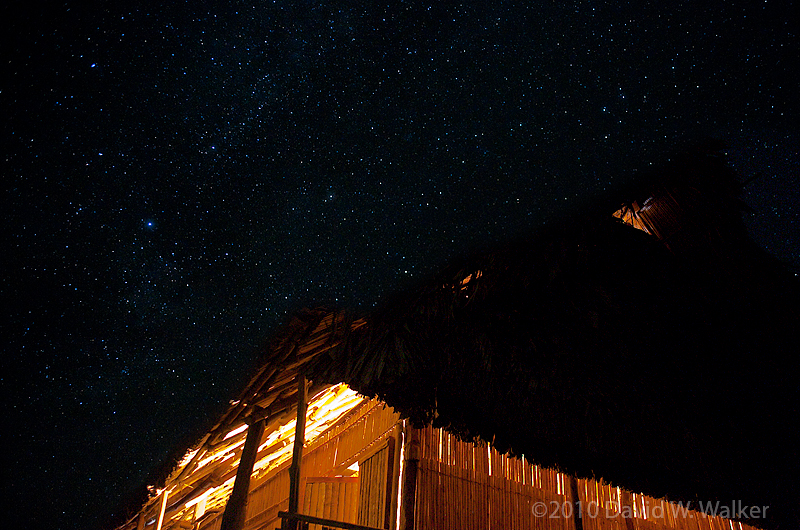
I’ll warn you up front. This is a long (over 3,000 words) explanation of my Digital Asset Management method. It’s a great place to start if you want something to work with for managing your own files.
It’s an easy method to implement and it’s scalable (meaning you can add files to it forever and it will keep working).
After reading and thinking about this issue for many years, this is the shortest most concise and completely laid out method I’ve seen for the average photographer.
It is however, as dry as popcorn flatulence. With that said, let’s get on with it…
=========================================================================
Years ago, Kim and I bought her mother a digital camera. On one visit, Kim’s mom handed us the camera and said, “It’s full”.
Thus begins the process of Digital Asset Management (DAM). What to do with all these images after we’ve filled our cards.
Everyone has a method for dealing with the chaos and being that I’m possibly the laziest person on Earth when it comes to DAM, I thought I’d share my method. Please note that this is not Kim’s method. And, this is not the method I would recommend if you are serving up your images to a stock photography agency.
I have one underlying principal to my method and it can be stated in one sentence: “Never spend 100 hours organizing if it only saves 10 hours of searching later.”
In other words, I’m not investing a lot of time in a system just because it’s orderly. It better be fast and effective.
One quick note before I continue. I’m using a PC. Certain minor things may be slightly different on an Apple.
========================================================================
SET UP Primary and Sub-Folders
Before I import my files, I need to set up Folders on an External Hard Drive.
I will make the distinction here between Primary Folders and Sub-Folders. Primary Folders are the folders that contain images from a specific shoot. Sub-Folders are the organizing folders within the Primary Folders. The Sub-Folders are always the same.
To quickly set-up these Folders on my External Drives, I keep a folder on my desktop called “DAM Structure ” which contains all of my “Sub-Folders”.
The Sub-Folders
Within every Primary Folder are the following Sub-Folders(yours may vary depending upon your needs – and in fact, mine are more detailed and tailored to my studio work-flow):
01 Original RAW files
02 Copies of BEST RAW files
03 PSD files (PSD refers to file which have been worked in Photoshop)
04 JPG Blog
05 JPG Facebook
06 JPG Printer
As I said, every new Primary Folder will contain these 6 Sub-Folders.
When I import my files, I import them into the “01 Original RAW files” Sub-Folder within my Descriptively Named Primary Folder.
The Primary Folders
Before Importing my images I look through them with Bridge and determine what Primary Folders I wish to create. I name these Primary Folders based upon content of images I wish to group together.
Folder names should contain Year_Month_Date (This will keep the folders in perfect chronological order over the years) and an additional general description.
For example: 2010_08_28_Iceland_Geyser (if you use 2010_Aug_28_Iceland_Geyser, the order will follow alphabetically and put your “Aug” folder ahead of your “Jan” folder – and you don’t want that.)
2010_08_28_Iceland_Geyser
2010_08_28_Iceland_Horses
2010_08_30_Iceland_Keflavik_Harbor
2010_09_27_Morocco_Sahara_Desert
I copy from my Desktop the DAM Structure Sub-Folders (01 thru 06) and paste them into each of these Primary Folders.
For Example:
2010_08_28_Iceland_Geyser (Primary Folder) – Contains the following Sub-Folders:
01 Original RAW files
02 Copies of BEST RAW files
03 PSD files (PSD refers to file which have been worked in Photoshop)
04 JPG Blog
05 JPG Facebook
06 JPG Printer
Now when I import my files, I direct them into the proper “01 Original RAW files” sub- folder.
I use the Bridge “File Import” program, but you can alternatively use the similar feature in Lightroom or Aperture.
With a single CF Card, I look at all of the files on the card (you can see thumbnails of all files on the CF Card in the import dialogue box) and SELECT for Import only those files going to the same folder – meaning I may actually do several separate imports from the same CF Card – each import sending a different selection of files to different sub-folders.
So if I have Iceland Geyser images and Iceland Horse images on the same card, I’ll select only the Geyser images first and import them to:
2010_08_28_Iceland_Geyser / 01 Original RAW files
THREE Notes :
1. Make sure that at this stage, you have already created a Copyright Template in whatever software you’re using and that you apply it during the import. For example, I make a template on my return from each trip that contains all IPTC information common to ALL of the files into a template which I can select during import. (IPTC information is the information YOU add to the file. Metadata is the information the CAMERA attaches to the file.)
If you do it the right way, you’ll make a template customized for each group of images. (I consider this too much work, but here is how you would do it):
Template Name: Iceland Geyser August 201o. Put in information that applies to ALL files from Iceland Geysers. Keywords: Iceland, 2010, Geyser, Geothermal, Steam, Mineral, Volcano, Sulfur, Eruption, Plume, Geyser Coffeeshop . . .
You can make a template for each Primary Folder, in which case you’ll make many templates and customize them to the files you’ve selected for that specific import. — Too much work for me.
OR
You can be lazy and do what I really do, which is to put as many applicable keywords in One template and use it for everything I import from that tour.
That means my ‘Lazy” template will say : Iceland, 2010, Horses, Geyser, Geothermal, Mountains, Lagoon, …
Now images of Icelandic horses will have a lot of key words that don’t really apply, but at least I’ll be able to only have to search the Iceland pics for the horses – which can be a relatively quick process. If you’re more of the administrative type, then by all means do a better job than I do.
On each template, I also add all contact and copyright information. For Copyright I use : ©2010 David W. Walker (make the © symbol by holding down the “ALT” key and typing 0169 – For a MAC, I believe it’s OPTION 0169 ).
Now when I import my files, I select this template and all images meeting this criteria will be given pertinant information and copyright notification.
2. I do not “rename” the files at this point.
3. Since I’m going to rename and sort the files shortly, I don’t copy the images to (2) locations simultaneously, even though this is an option in the import dialogue box. Rather I only import them to my Primary External Harddrive.
I wait to copy them to a second Backup External Hardrive until I Rename them and Rate them a bit later in the process.
=====================================================================

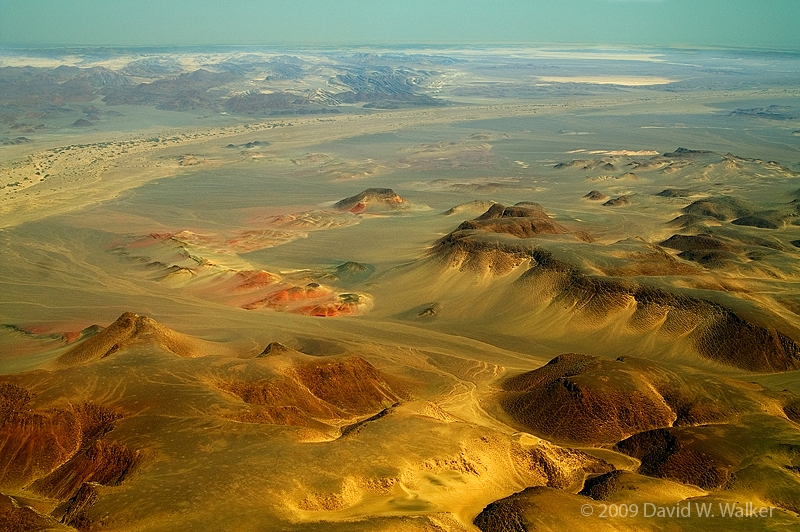
RENAME THE FILES
Next I navigate to Each “01 Original RAW files” Sub-Folder and sort the files according to “Date Created”. Even though I’m sorting by Date, it also sorts by Time Created. I do this in case any of the numerical file names from my camera “Turn The Corner” from 99,999 to 0001. Every once in a while this happens and when it does, it can put your files in numerical order rather than in the order they were taken.
Once sorted into order of creation, I rename all of the files with a naming system which is a tad redundant and more detailed than the name of the Primary Folder.
For example:
2010_08_28_Iceland_Geyser_Overview_0001
2010_08_28_Iceland_Geyser_Overview_0002 ….
2010_08_28_Iceland_Geyser_GiftShop_0148
2010_08_28_Iceland_Geyser_Giftshop_0149 ….
2010_08_28_Iceland_Geyser_Plume_0569
2010_08_28_Iceland_Geyser_Plume_0570 ….
Here, I begin at the top of the image pile and select a group of images with a similar Theme. I go to “Batch Rename” and give them a descriptive name and make sure that the numbering sequence begins at “0000” on the very first image.
(I allow the sequence number to continue without resetting as I go from group to group. However, I do reset the sequence to “0000” when I begin the process in a new folder.)
I then go to the next sequential group of images with a common Theme and Batch Rename them. I continue to do this as I proceed through the folder until I’ve Re-Named all of the images.
Now I have Image Files that contain broad-spectrum keyword information (applied during Import), Folder Names with Date and General Description, and File Names with Date and More Detailed Descriptions.
If you sort by Filename, the files will no longer be in time-sequence, they’ll be in alphabetical order. However, if you sort them by Date Created, they will be back in order.
The next thing to do, is rate the image files – separate the wheat from the chaff as it were, or that other thing that has something to do with Shinola.
=====================================================================
RATE THE FILES
Here is Dave’s (5) Star Rating System
0 Stars = Worthless – Plain and Simple. All Files Start Here.
1 Star = HDR and Panoramas Sequences
2 Stars = Clone Sources (contain elements useful for fixing other images)
3 Stars = Worth Keeping, but not spectacular
4 Stars = Competitors with Spectaculars
5 Stars = Spectacular
All files begin life as (0) Star Files and only move up the chain if they’re worthy. Why downgrade a bad file to Zero. If you photograph like I do, you’ll have waaaay more Zero’s than Threes and Fives!
STEP 1
Navigate to one of your “01 Original RAW files” Sub-folders.
Go through and “STACK” all of your HDR and Panorama Files together. In Bridge, there is a feature to Automatically do this for you, but if you don’t trust Adobe you can select the group of images and do the stacking manually.
A STACK is group of related images. In Bridge, a stack of images looks as if you’re looking down on a short pile of face cards with the edges of the lower cards just slightly visible.
If you don’t know how to do this, it takes just a few minutes in the Bridge Help Menu to find out. I’m fairly certain that Lightroom and Aperture also have this feature.
Select all of your “WORTHY” Stacks and Give them a (1) Star. If any of your stacks of images are obvious “duds”, leave them as Zeros.
STEP 2
Decide KEEP or DON’T KEEP. — Quickly go through all the Zero-Rated Files and decide if they are worth keeping. It doesn’t matter if they’re only Marginally Worthy or the best photo you’ve ever taken – If it’s worthy, give it a (3).
STEP 3
Go back to the (3) Star files (you can sort the files by star rating so all the 3’s are together), and look for any images which rise to what you consider to be the highest level of your photography. These are your Spectacular images and you won’t necessarily have any in a given Sub-Folder.
STEP 4
After you do you (1)Star Panoramas and HDRs, determine if any of them rise to the 5* Level. If so, go back to the Stack for these images and change the images to 5*.
I do not agree with the philosophy that says “None of my images rate a 5”. There are likely many which are 5’s now. In several years they may not be, but you will easily be able to come back years later and find the best work you were doing in 2011.
=====================================================================
COPY (5)STAR IMAGES to SUB-FOLDER “02”
After I have RATED all of the files in the “01 Original RAW files” Sub-Folder, I COPY ( Not MOVE !! ) all of the (5) Star Files into the “o2 Copies of BEST RAW files” Sub-Folder. — I COPY rather than MOVE just in case I accidentally delete or corrupt one of my “Best” files. Remember, they’re my best.
I do this so that when it comes time to work on the images, I don’t have to wait very long for Bridge to process the images in the folder. The more images you have in a folder, the klunkier and slower Bridge behaves.
I believe this is also the case in Lightroom. The fewer images in a folder, the quicker you can get down to business. So never return from your month long trip to Africa and dump all 6,000 images in a single folder or you may not live long enough to process them.
=======================================================================
OUTPUT FILES
As you progress through your own workflow, whether it be in Adobe Camera RAW, Lightroom, or Photoshop, – you will likely produce output files for various purposes.
I like to segregate these output files into various folders so that they’re easier to find. That’s why I have:
03 PSD files (PSD refers to file which have been worked in Photoshop)
04 JPG Blog
05 JPG Facebook
06 JPG Printer
The numbers at the beginning of each folder name assure that my Sub-Folders will always be in this order, but you don’t have to use my Output Folder names. These are just generic ones to get you started. In my studio photography, I shoot both Nikon and Hasselblad, so I have 14 folders which break down even further.
Derivative Files
One thing to consider is how to name so-called Derivative Files.
If you are working on a file and save it in your “03 PSD files” Sub-Folder as:
2010_08_28_Iceland_Geyser_Giftshop_0149.PSD
This should remain as your ORIGINAL “Worked” file, meaning this is the file with all of your tweaks – and it is Juuussst Right!
But now you want to save back a file for an 8×10 version. Since your sensor has an aspect ratio of 8×12, you’re going to need a cropped version. I recommend you save off a copy of that file named as follows:
2010_08_28_Iceland_Geyser_Giftshop_0149_8x10.PSD
If you make a Black and White version, name it:
2010_08_28_Iceland_Geyser_Giftshop_0149_BW.PSD
=====================================================================
WHY THE UNDERSCORES in the FOLDER and FILE NAMES?
This is quickly becoming a non-issue, but for years many software would not recognize file names with spaces in them. Until I’m certain that this behavior has been expunged, I always put in the Underscores.
Does this mean all you have to do is make sure YOUR software recognizes files with spaces? Unfortunately, NO. Many upload programs have trouble recognizing file names with spaces, so I continue to put them in.
========================================================================

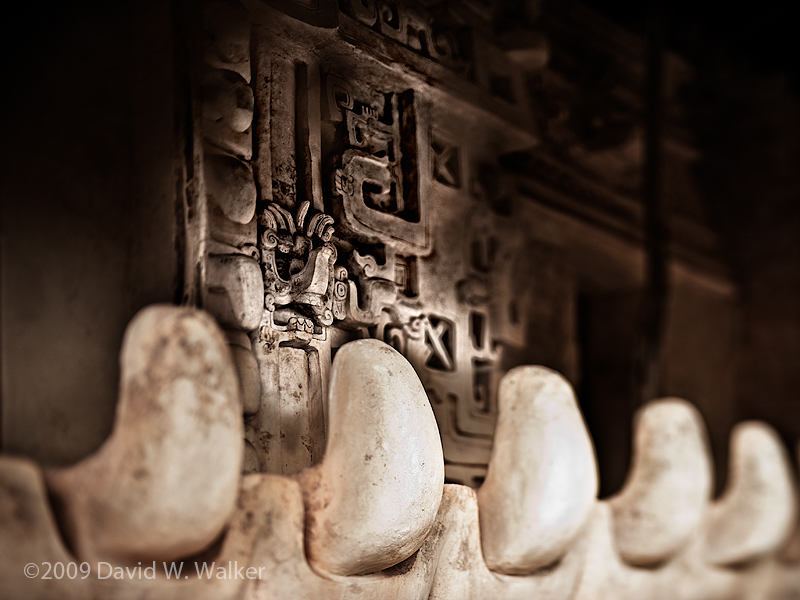
ARCHIVING
STEP 1
Back up your Primary External Hard Drive Immediately.
At this stage, you should have one copy of your files on you Primary External Hard Drive and one copy on your CF Card.
Before you go any further, make a copy of your Primary External to a Backup External Hard Drive.
I give every group (primary and backup) of hard drives a sequential name and write it on the Hard Drive itself with a Sharpie.
For example, if you’re starting out, name your First Hard Drive:
Drive_2011_01 I don’t use the same hard drive in more than a single year, but if you do, be sure to write the range of dates on the drive as well.
When you work on your images – ALWAYS ALWAYS ALWAYS – work exclusively on your PRIMARY hard drive. Then at the end of the day, BACKUP your work to your BACKUP harddrive.
I use a program called SYNCBACK to do this.
SYNCBACK will actually SYNC your drives, meaning: if you worked on both of them rather than just your Primary Drive, it will help you synchronize the two drives, but there is a very real danger that if you’ve not yet had your coffee you can accidentally overwrite older files on top of more recent ones.
If you always work on your Primary drive, you can instead BACKUP to your secondary drive. In this way, your data only goes one way and you are on your way to safe secure data backup.
Additional Considerations:
A) I recommend that once you’ve filled both drives you either copy everything to a Third Drive and take it off site
— OR —
COPY only the following Sub-Folders to DVD:
02 Copies of BEST RAW files
03 PSD files (PSD refers to file which have been worked in Photoshop)This way you’ll have a backup of your most valuable files.
B) Move one of your backups off site. Your files are also in danger of Physical damage (ie Tornado, flood, sprinkler system) – and – theft. Moving a copy off site mitigates this danger.
STEP 2
Catalog your images so you can find them later. After several years, you might find yourself with a bookshelf of external harddrives. Finding an image can become an all day event.
One of the reasons I didn’t get on the Lightroom bandwagon was because it wasn’t originally able to catalog images off-line on external harddrives. (not to mention the fact that I was already using Photoshop, Bridge and Camera Raw very quickly and effectively — I didn’t want another piece of software on my computer — and everytime I tried to do something in Lightroom it seemed to take forever. )
Because of that, I use Microsoft Expression Media. Phase One has now acquired this software and more information is available at: www.phaseone.com/expressionmedia2
I haven’t updated my copy in a while, but continue to use it successfully in my own ham-fisted way.
Remember at the beginning when I stated my philosophy? “Never spend 100 hours organizing if it only saves 10 hours of searching later.”
Well, here is where the system becomes less than elegant, but I love the simplicity. It’s not lightning fast. It’s not even as fast as the speed of sound, but it is as fast as the old 1969 Galaxy 500 I had in highschool with the 396 engine.
In the past (and it may still be the case) Expression Media allowed a finite number of images in a catalog. If you kept to the minimum thumbnail size, I believe it was somewhere around 180,000.
So in Expression Media I create a Catalog and name it: Catalog 001
In Catalog 001, I create a “Sub-Catalog” for every external harddrive.
I name each “Sub-Catalog” with the exact same name as my sequential Harddrives.
Let’s say I can put up to (3) External Harddrives into a single catalog. As I said earlier, you can only put 180,000 images in a single catalog.
Catalog 001 will contain the following “Sub-Catalogs”
Drive_2011_01
Drive_2011_02
Drive_2011_03
In case you didn’t notice, the Sub-Catalogs are exactly the names I wrote on each External Hard Drive group with my Sharpie.
When Expression Media scans each external harddrive, it will make a small thumbnail of every image as well as record all of the data and filenames I associated with each file in the process above.
STEP 3
FIND YOUR IMAGE FILE !
This is where the rubber meets the road – or that other things where you get off of the pot….
Now you’re sitting at your desk and it’s the year 2014. You remember you had that photograph in Iceland of the Horses, but you don’t remember what year that was. You’ve been twice now, and you can’t remember if you photographed the horses on the first or second visit — but you do remember the beautiful blond girl riding it and want the photo of her on the horse.
You open Expression Media and see you have Catalog 001 and Catalog 002, each with (3) sub-catalogs.
You think it was most recent trip to Iceland in 2013, but you’re not exactly sure of the year. So you open Catalog 002 (the latest one) and note the following Sub Catalogs:
Drive_2012_01
Drive_2012_02
Drive_2013_01
You go to the search field in Expression Media for Catalog 002 and type in Iceland. It immediately takes you to an image from your last Iceland trip in Sub_Catalog : Drive_2013_01. You were right, your last trip to Iceland was in 2013!
In the group of thumbnails on the right side of the interface, you begin to scan the images and quickly realize that this was not the trip with the girl and the horses.
So, you Click on Catalog 001 (which contains older images on older hard drives) and follow the same procedure. You type in Iceland and are directed to the thumbnails in Sub-Catalog: Drive_2011_02 with Iceland in the name – folder – keywords, and you begin to see images that fit your memory of the trip with the girl and the horses.
You slowly scan through the images, forgetting about the keyword business and after a few minutes see thumbnails of the horses. The thumnails are fairly small in order to get 180,000 images in a catalog, but you can tell this is in fact the trip.
Now you’re done with the cataloging software. You now know the main bit of information you were wanting — Namely, which hard drive has the photos you want.
You go to your shelf with your External Harddrives and Select the drive marked “Drive_2011_02” , plug it into your computer and quickly find the image you were looking for using Bridge or Lightroom.
Not too elegant, but you didn’t spend your life forever logging information into your files.
==========================================================================
I do have a backup system for getting information into my files. Kim has agreed to do the keywording for me for $50 an hour. Unfortunately I can’t afford her.
==========================================================================
This method is something I’ve been working on for many years and find it to be both reliable and scalable.
I tried to follow the other methods, but anything that requires an entire book to explain and which I then have to select what does and doesn’t apply to me is beyond my attention span for such dull work.
I hope you find this method useful. It probably won’t line up with your workflow or maybe even your way of approaching DAM, but I firmly believe that this system is an excellent start point from which you can tweak your own system. Soon you’ll be able to find your images without spending a rediculous amount of time cataloging them.
Best of luck!!!


